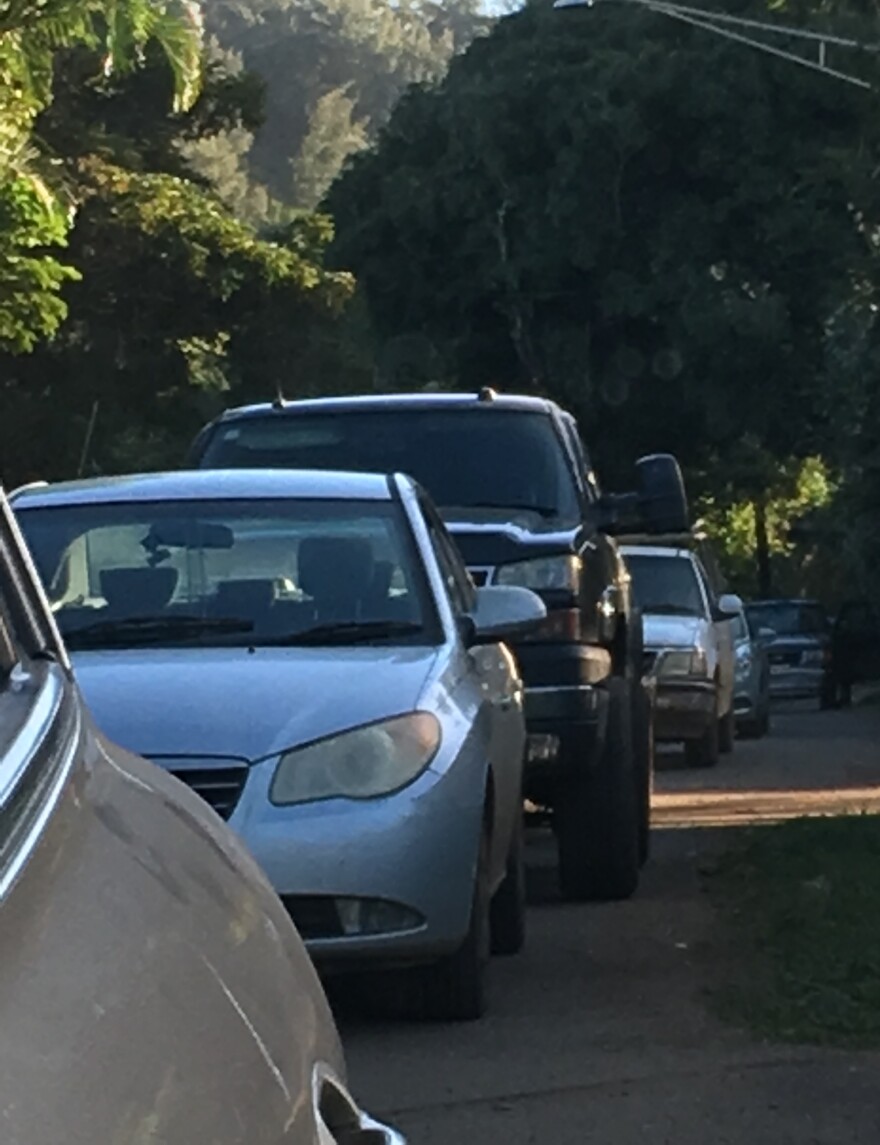The last several miles of road along Kaua?i’s North Shore remain closed to the public since the April flood. Local residents are limited to commute along one lane of the highway and only during scheduled convoy times. HPR’s Ku?uwehi Hiraishi hopped on a recent convoy up the coast and filed this report.
“Ok, this is what the public sees. At this point, you know. Road’s closed,” says North Shore community leader Maka?ala Ka?aumoana.

She invited me past the road closure at the end of Hanalei. Traffic to H??ena and Wainiha has been limited to local residents since April, when heavy rains and flooding took out major portions of K?hi? Highway.
“So the scaredy cat tourists stop there you know where we want them to stop,” says Ka?aumoana, “But many don’t, they just keep going.”
Local traffic is limited to one lane of the highway and only during scheduled convoy times. We arrive at the convoy checkpoint about three miles in.
HIRAISHI: I’ve seen tourists go past that first road closure.
KA?AUMOANA: But they can?t get past the checkpoint here. See I have a sticker here. So that gets us in. Yeah, it isn?t my smiling face that gets me past this entry gate.

We’re the fifth car in line for the 1pm convoy. There’s a security guard shack up ahead with two guards. Cars start pulling up behind us. Work trucks with piles of dirt coming from the opposite direction.
KU?UWEHI: So this is the convoy?
KA?AUMOANA: Yeah, so this is in fact the convoy coming out.
After about 20 minutes or so we get the okay from security to pass. We drive around the bend and spot landslide zones and repair sites. Tree trimmers are working overhead.

“So the road went away here,” says Ka?aumoana, “They’re having to cut the jungle back because with all that less traffic. This road went completely away. So they had to rebuild an entire lane. With all the reduced activity, the jungle started to take over again.”
Turning into Kepuhi, we spot what Ka?aumoana says is the worst of the landslides. Workers scale the mountain, loading dirt and boulders into trucks. We can see the next convoy lined-up waiting to head to town. The convoy has been a way of life for residents like Erlette Smith.
“Well, it wasn’t easy at first,” says Smith, “Nobody likes sitting in line two to three hours trying to do something.”
Smith echoes the sentiments of many North Shore residents adjusting to convoy life.

“If you have grocery shopping, everybody has a cooler or cooler bag because you don’t know how long it’s going to take you,” says Smith.
On the other hand, says Ka?aumoana, six months of limiting traffic to local residents has had a positive effect on the coast.
Before the flood, these communities would see as many as 3,500 cars a day drive out to enjoy the beaches and hikes along the coast.

“See that’s the conflict. That’s the conflict. Their lives are governed by this convoy. They don’t have the services. They don’t have independence,” says Ka?aumoana, “But they have privacy. They have their place back and they see and feel the recovery of the resources.”
We have another three hours before the next convoy back into town. Reaching the end of the road, we arrive to a nearly empty K??? Beach.





